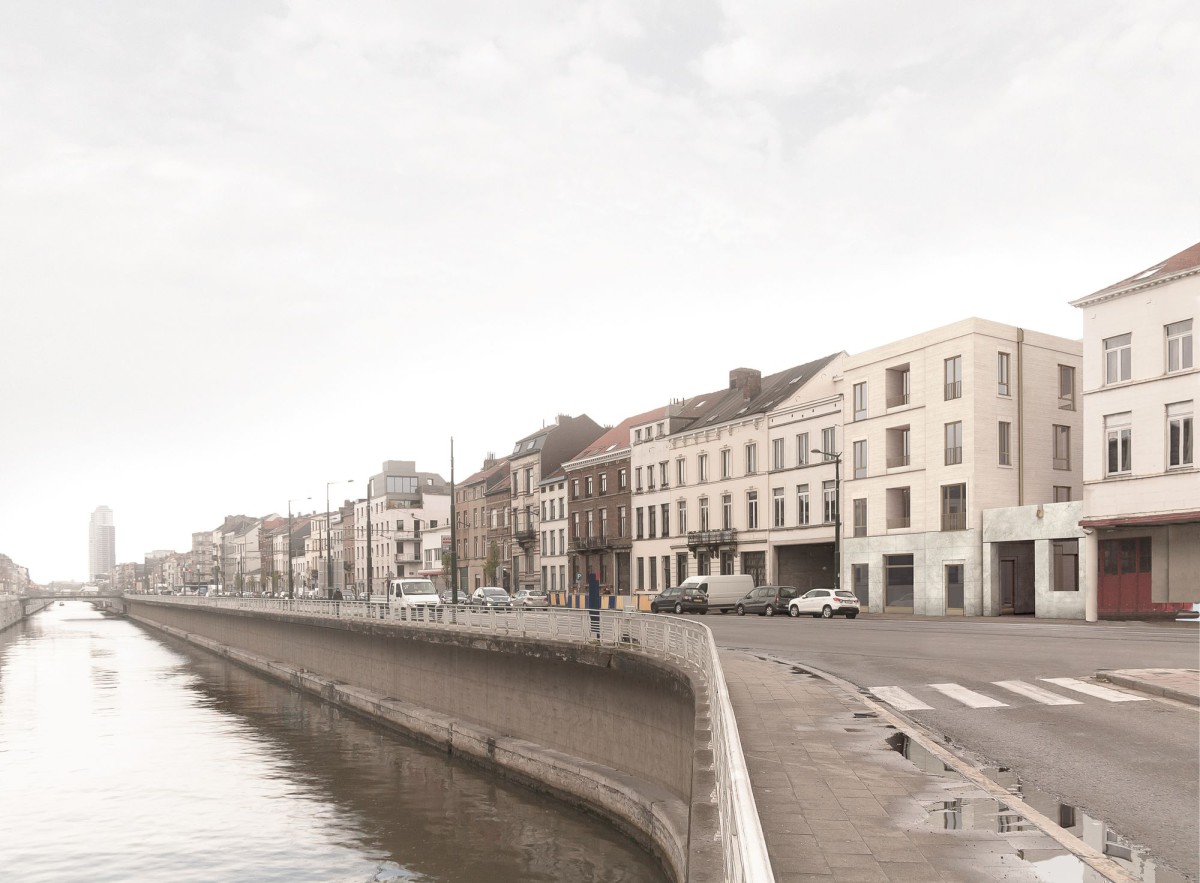Bromme. Mauser. Rahms
Collective Domestic – Shared Living in Brussels. How can unrelated individuals live together without compromising privacy? Where does ownership begin? Our project aimed to explore the possibilities of the collective domestic in contemporary residential architecture.
_
The site, located in western Brussels, came with a set of challenges that defined our urban strategy. The volume aimed to merge into the urban fabric and be a reminiscent of the old belgian typology of the burgeoise and back house. By assmilitaing the facade materials, we kept the rythm of the street intact and imporved the habitability of the area by adding density.
The facade is composed of closely packed buildings next or on top of each other with different characters and architectural proportions. The entry porch created a slow filtering from the street and allowed to enter the building from the centre. If the transition from the outside is too abrubt, the home fails to feel like an inner sanctuum, as C. Alexander stated.
The floorplan combines the fluidity of the Plan Livre and the privacy of the cellular plan, hence creating a DNA for spaces that can adapt to the inhabitants. A single floor can adapt for one, two or three households (families, couples and singles). Rather than creating satellite rooms around a shared common room, we introduced the device of the expandable living room: you can temporarily expand your apartment by opening up to the shared living room. The added value of the domestic comes from sharing something you otherwise couldn‘t afford.
_
Korbinian Bromme, Stephan Mauser, Hellmer L. Rahms © 2016
Thesis in the Chair for Housing and Urbanism of Prof. Stephen Bates and Prof. Bruno Krucker of the Technical University of Munich.
















